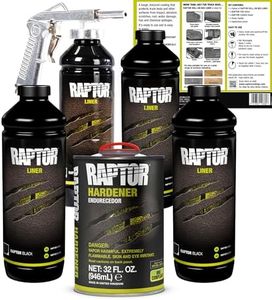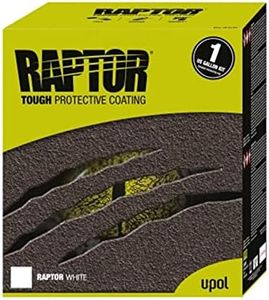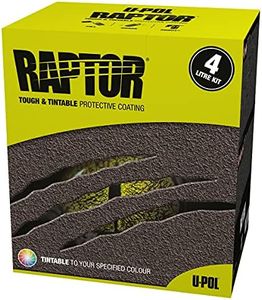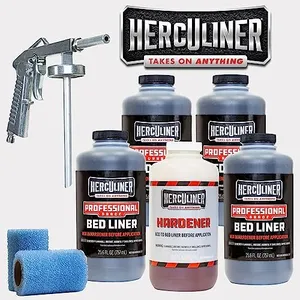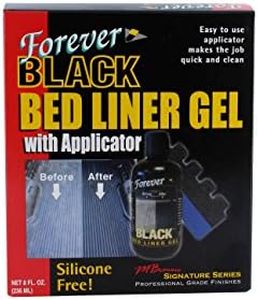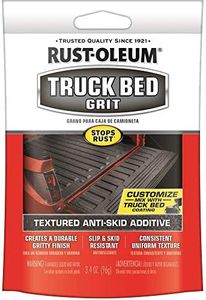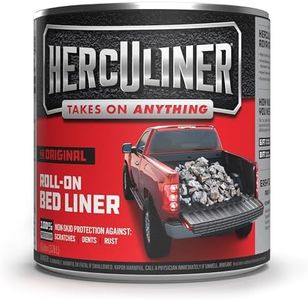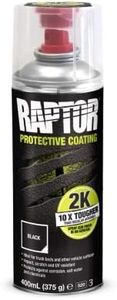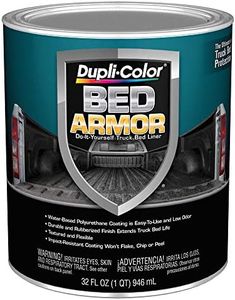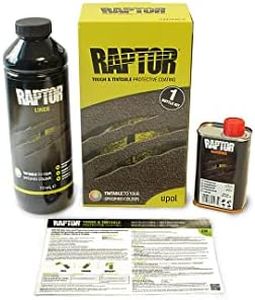We Use CookiesWe use cookies to enhance the security, performance,
functionality and for analytical and promotional activities. By continuing to browse this site you
are agreeing to our privacy policy
10 Best Truck Bed Coatings
From leading brands and best sellers available on the web.Buying Guide for the Best Truck Bed Coatings
Choosing the right truck-bed coating can be an important decision for keeping your truck bed protected from scratches, dents, rust, and the elements. The type of coating you pick affects not only how your truck looks, but also its durability and how you use the space. Understanding the main factors helps you match a product that fits your needs and lifestyle, whether you use your truck for heavy-duty hauling or occasional weekend projects.Type of CoatingTruck-bed coatings generally come in two main types: drop-in liners and spray-on or roll-on coatings. Drop-in liners are molded plastic and sit in the bed, offering quick installation and easy removal but can let water and dirt get underneath, which may lead to rust. Spray-on and roll-on coatings are applied directly, creating a permanent, close-fitting layer that seals against moisture and is less likely to shift. If you want a durable, semi-permanent finish and don’t mind a more involved application, spray-on or roll-on is usually better; if you want something removable or mainly need to protect against simpler scratches, a drop-in liner may do the job.
Thickness and DurabilityThickness refers to how much material is applied, impacting protection and longevity. Thicker coatings offer more protection against impacts, dents, and rust, while thinner coatings provide basic coverage. Generally, thicker coatings are preferred for heavy-duty use, like hauling tools, equipment, or construction materials, whereas thinner coatings might be suitable for lighter-duty usage, such as carrying camping gear or groceries. Consider how rough your usual hauling is to decide what thickness suits your needs.
Material CompositionTruck-bed coatings are made from materials such as polyurethane, polyurea, or rubberized mixtures. These compositions affect flexibility, resistance to chemicals and UV rays, and overall toughness. Polyurea-based coatings tend to cure faster and offer strong resistance but can be more rigid, while rubberized options provide some cushioning for cargo. If you’re often hauling heavy or sharp objects, look for strong, hard materials; if you want something to absorb shocks or reduce sound, a more flexible, rubber-like material may be better.
Application MethodApplication refers to how the coating is put on—some require professional spraying, some can be rolled or brushed on at home, and others come as ready-made molds. Professional spraying often gives the most even and durable finish, but DIY roll-on options are popular for those who like doing it themselves and saving on service costs. If you want a fuss-free, neat look and maximum durability, consider professional application; if you’re comfortable with a hands-on approach or want to customize, a DIY roll-on might suit your need.
Texture and FinishTexture and finish impact the look and usefulness of your truck bed. Smoother finishes are easier to clean but can be slippery, while rougher, textured surfaces grip items better and can hide scratches and scuffs. Consider whether you prefer a bed that's easy to sweep out or one that helps keep cargo from sliding. Also, think about aesthetics—some like a sleek, glossy look while others prefer matte and rugged.
Resistance to UV, Chemicals, and WeatherA good truck-bed coating should protect against sunlight (UV), fuel spills, solvents, and rain to prevent fading, cracking, or corrosion. If your truck spends a lot of time outdoors or in harsh conditions, look for a coating specifically rated for UV and chemical resistance to ensure long-term protection. If your truck is used mainly indoors or for light-duty tasks, standard weather resistance may be sufficient.
